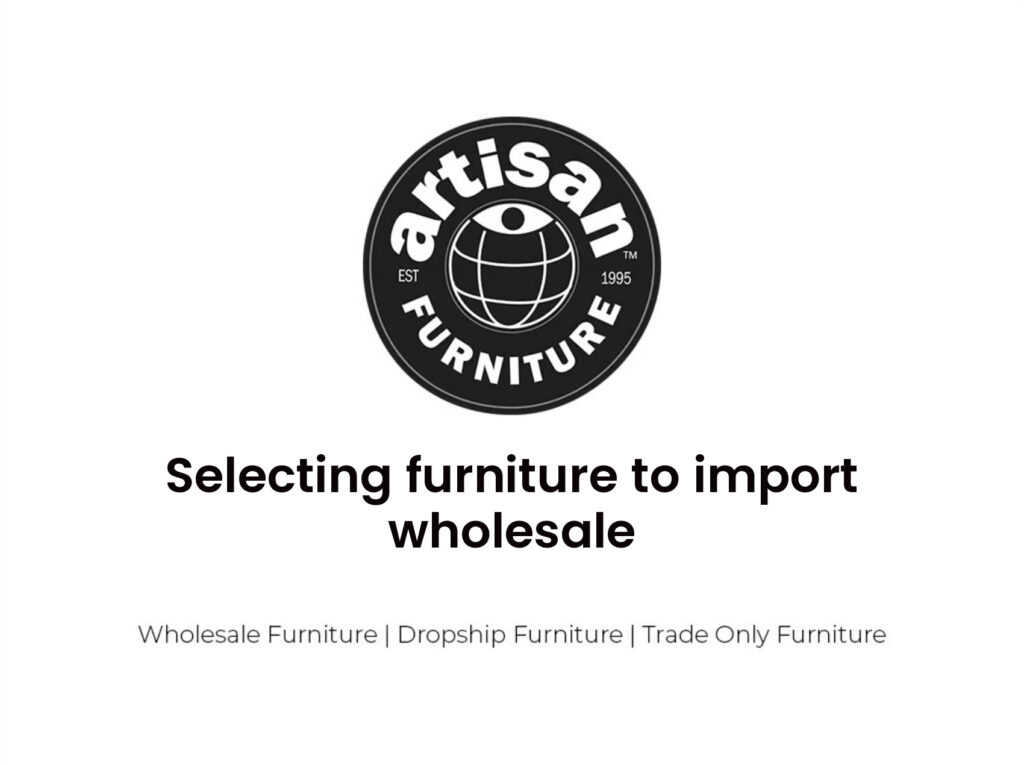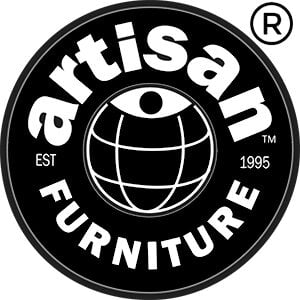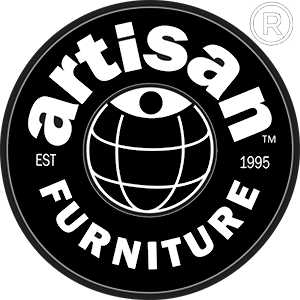Selecting furniture to import wholesale
Welcome to the second part of this 6-part e-course on import strategies.
- Step 1 – Analyse your business situation; make an initial determination about the business value of importing a selected product.
- Step 2 – Analyse the costs of importing. Begin by classifying your product then research the most advantageous countries to purchase from, based on the customs duty that will be charged. (Contract with a customs broker, if appropriate.)
- Step 3 – Calculate the cost of any consumption tax, excise tax or state/provincial/other tax.
Steps 1, 2 and 3 in the importing process represent your initial research and analysis. This groundwork will help you avoid many possible problems in the future.
You may be thinking about importing for any of several reasons:
- You would like to begin a business and believe that importing products from other countries for resale in your own country represents a good option.
- You already have a business and you would like to expand your product offerings by importing or, you hope that you can buy similar products less expensively in other countries.
- You are either a soon-to-be manufacturer or an existing manufacturer and you would like to reduce the price or increase the quality of your manufactured product by importing parts or raw materials.
Before you even think about looking for suppliers in another country, be sure you have done some analysis. For example:
- Is the product that you would like to import already available in your country? If yes, what advantage will importing bring, e.g., lower cost or higher quality?For example, although it may be possible to purchase embroidered linens in your country, you you may find that purchasing those hand worked linens from Vietnam is both less expensive and represents higher quality.
- If the product is not available in your country, will you be able to sell it or use it in your manufacturing to sell another product at a competitive rate? (If the product you are planning to import is very unusual, issues of price may be less important.)For example, you may find that a certain flavouring is simply not available in your country but can be found in several African countries. If the flavouring is part of a price-conscious consumable like ice cream, you may need to do an analysis to be sure that the cost of importing the flavouring will not increase your overall material cost too much. If, on the other hand, the flavouring will be used in gourmet chocolates, pricing has a great deal more flexibility and the attraction of an exotic flavouring could overcome any price barrier.
By the way, these two examples, textiles and food products, open up a whole universe of other issues such as quotas and safety requirements that we’ll discuss later in the course.
Cost of Importing
So, how do you learn about cost before you even look at suppliers? Well, the cost of imported goods is really the total of a number of costs, including:
- Supplier cost of product – we’ll discuss suppliers in the next section.
- Shipping costs – These are often the costs that are least well handled. We’ll talk about shipping in section IV.
- Customs duties and taxes – This is where you should do your homework on importing first. The duties and taxes that you will owe on a product you import depend on the product and on which country you are importing from.
- Fees to customs brokers, freight forwarders, etc.
- Warehousing fees
Let’s take a quick look at how duties and taxes affect the cost of your imported goods. (For an in-depth look at customs and duties for your country, you should take one of our country-specific importing courses, “Importing to the U.S.”, “Importing to the U.K.”, “Importing to Canada” and “Importing to Australia”.)
The Revenue Aspect of Importation
Global trade is huge business. Every country that allows importation has a vested interest in establishing trade policies that ensure a healthy economy, controlling the quality of goods coming into the country and collecting revenue on the trade.
Trading Agreements
Most countries have established trade policy and trading agreements that are in each of their own best interests. These policies and agreements govern the amount of duty that is collected on imported goods. For example, the UK has a list of about 240 countries that you can import from without paying any customs duties at all. On the other hand, if you import from the United States to the UK, you will pay full duty.
Every country publishes its customs rates in some sort of duty or tariff book that you can use to figure out:
- the most advantageous countries to import from;
- the duty that will be due on your product.
Be aware that these agreements change so you must stay on top of duty compliance.
However, in order to figure out the duty, you have to know how your product is classified.
Classification
Every country uses the International Harmonized Classification System or its own variation of that system to classify goods. The system assigns a 6 to 10 digit number to every product that is traded anywhere in the world so that the guitar strings you are importing will be classified as 9209.30 everywhere and might carry a more detailed classification number in a specific country. (Guitar strings imported into Australia are classified as 9209.30.00.51).
This classification is critical; duties are assigned by classification. You as the importer must be sure that your product is classified correctly. You can either use the tariff publications yourself to determine classification (a risky business), get help from a classification consultant (very good idea – some customs brokers offer this service – Section V for a discussion of customs brokers) or ask your customs service to classify for you. (You’ll know it’s their version of accurate but you may disagree and end up in an appeal process.)
Don’t skimp on this step; you’ll pay later. Your supplier may also be able to help; his products may have already been classified for your country.
Other Taxes
Many countries charge a Value Added Tax (VAT) or Goods and Services Tax (GST), otherwise known as a consumption tax. Many first time importers have absolutely no idea how to deal with this tax and are often shocked to find out they have to pay it. We won’t go into the mechanisms for dealing with this tax here except to say that if your country charges some type of consumption tax:
- You probably have to register for it;
- You will have to pay it on the goods you import, charge it to your purchasers and provide an accounting to your government.
The good news is that it is a tax on the end user. If you are passing goods along, you should be able to gain back the tax you paid and stay about neutral. Of course, if you don’t know that, you will be paying a lot of tax (20% in the UK) and suffering the consequences of that added cost. Be smart and get well informed about consumption tax in your country.
If you are importing luxury goods such as cigarettes, perfume or alcohol, some countries collect an excise tax. Again, be sure you understand it so you know how to collect it, remit to the government and account for it. We’ll talk more about systems for capturing importation data later. For now, we are just trying to list the various costs associated with importing.
What have we learned?
By the end of this section, you should know:
- You need to analyse the cost, quality and availability impact of imported goods on your business.
- You need to determine the additional costs associated with the importation process so that you can anticipate the effect on your pricing and competitiveness.
- You would be well advised to get some help in figuring out classification.
- Be sure you understand how the duties, consumption and other taxes work in your country.
To our success working together,



